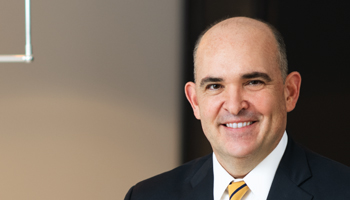FERC Takes Action to Spur Transmission Planning and Expansion Across Jurisdictional Boundaries
At its June open meeting, the Federal Energy Regulatory Commission announced two actions aimed at supporting transmission planning across jurisdictional boundaries. The first action establishes a Joint Federal-State Task Force on Electric Transmission under Section 209(b) of the Federal Power Act (“Task Force”), and the second action encourages states and transmission providers to enter into voluntary agreements to plan and pay for transmission facilities. Together, these actions seek to advance the administration’s goals of expanding the nation’s transmission infrastructure to support grid reliability and facilitate the integration of clean energy resources.
Order Announcing Joint Federal-State Task Force on Electric Transmission
Docket No. AD21-15
The Commission’s order establishing the Task Force is an outgrowth of recent coordination with state regulators at the National Association of Regulatory Utility Commissioners (“NARUC”). The Task Force concept proposed through these efforts recognizes the shared authority of federal and state regulators over various transmission-related issues and provides a formal vehicle for examining such issues.
The Task Force will be comprised of all FERC Commissioners and representatives from 10 state commissions (two from each of NARUC’s five regional associations), and FERC requests that NARUC submit nominations for the state commission representatives within 30 days of the date of the order, or July 19, 2021. The Task Force will convene for multiple formal meetings annually, with the initial meeting to be held in fall 2021. All state commissions will be invited to submit agenda topics for public meetings and to submit comments before and after meetings. Staff from FERC, NARUC and state commissions will support the Task Force.
The order grants the Task Force the authority to make recommendations to FERC on potential modifications to FERC’s regulations, present recommendations at a monthly FERC open meeting, and develop a record to be incorporated into FERC and/or state commission proceedings. FERC intends the Task Force to focus on “topics related to efficiently and fairly planning and paying for transmission, including transmission to facilitate generator interconnection, that provides benefits from a federal and state perspective” and lays out a list of specific topics the Task Force may consider.
Policy Statement: State Voluntary Agreements to Plan and Pay for Transmission Facilities
Docket No. PL21-2
Concurrent with the Task Force order, FERC also issued a Notice of Policy Statement (“Policy Statement”) encouraging state efforts to plan and pay for transmission facilities through “Voluntary Agreements,” which it defines as agreements between: (1) two or more states; (2) one or more states and one or more public utility transmission providers; or (3) two or more public utility transmission providers. The Policy Statement acknowledges the possible existence of “confusion” regarding the relationship between Voluntary Agreements and Commission rules and expresses concern that regulations may be deterring such agreements. In this vein, the Policy Statement clarifies that neither the Federal Power Act nor the Commission’s existing rules and regulations categorically preclude Voluntary Agreements. In particular, the Commission notes that Order No. 1000 allows the negotiation of voluntary alternative cost sharing arrangements distinct from the relevant regional cost allocation methods and provides examples related to PJM’s State Agreement Approach. Finally, to the extent that states, public utility transmission providers, or other stakeholders believe that the relevant tariffs impose barriers to voluntary agreements, the Commission encourages the submission of filings to remove or otherwise address those such barriers.
Commissioner Danly’s concurring opinion expresses skepticism as to the ultimate effect of the Policy Statement and questions whether the referenced “confusion” regarding the interaction of
Voluntary Agreements and FERC’s policies actually exists. Commissioner Christie’s concurrence opines that the era of consensus regarding the purpose and function of ISOs and RTOs has passed and been replaced by increasing divergence of state public policies “over such fundamental issues as mandated resource mixes, compensation in capacity markets, transmission planning criteria and cost allocation, and carbon taxes.” Acknowledging this fundamental shift, he emphasizes that states have options to achieve regional benefits outside of the context of RTOs/ISOs, contemplating “modern, innovative versions of power pools aligned with the member states’ public policies as to resource adequacy and preferences.”
Implications
The two actions taken at the June 17th open meeting are a step towards the Chairman’s goal of facilitating the integration of renewable resources through the construction of transmission infrastructure. As Commissioner Danly noted, the negotiation and development of Voluntary Agreements are not strictly prohibited by the Federal Power Act. And while it makes sense that FERC and state commissions work collaboratively to facilitate the development of needed transmission infrastructure, FERC’s actions provide broad direction but do not guarantee the success of these efforts. Ultimately, only time will tell whether either of FERC’s actions will have their intended effect. One thing that does seem clear is that these two actions are likely the beginning of FERC’s initiatives that will be rolling out over the coming months to address the administration’s goal to expand infrastructure.




